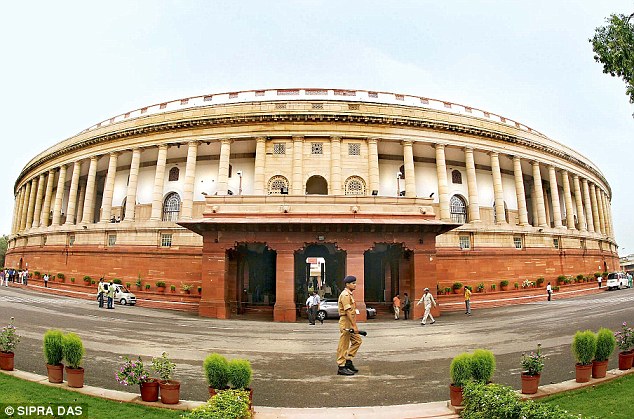Below are some most exotic tourist attractions of Delhi:-
Delhi is second-largest metropolis city and Capital of India. It is the third largest city. Delhi is main starting point for North India. It is divided into two parts Old Delhi & New Delhi. In Old Delhi you will find many mosques, monuments and forts relating to India's Muslim history. Red Fort and Jama
Masjid, India's largest mosque combined with the old city's bazaars.
The hub of the metropolis is Central New Delhi, an orderly plan of wide roads lined with sturdy colonial buildings which was established soon after the imperial capital of British India moved here in 1911. It is a planned city with wide streets, parks. Parliament House, India Gate President house, Old Fort, Humayun's Tomp, Quitab Minar & Zoo are in NewDelhi.
| Area | 1484 sq km |
| Altitude | 239 metres above sea level |
| Temperature | Summer-28.0 C-46.0 C Winter-4.2 C-28.0 C |
| Language | English, Hindi, Panjabi |
| STD Code | 011 |
| Rainfall | 714 mm average yearly |
| Best Time to Visit | September to March |
1. AGRA:-
Introduction
the name brings to our mind superb monuments including the magnificent Taj which is one of the "seven wonders" of the world. It is situated along the banks of the River Yamuna and attracts thousands of tourists every day from all over the world. The Taj, one of the wonders of the world and a World Heritage Monument, is only one of the innumerable edifices the Mughals endowed this city.
This beautiful building is elegantly built with white marble by the Mughal Emperor Shah Jahan between the years 1631 to 1648 and it was built in the memory of his favorite beloved Queen Mumtaz Mahal. Standing majestically on banks of Yamuna River, this breathtaking, immensely beautiful monument is a synonymous to romance and love. TAJ MAHAL IS CLOSED ON FRIDAYS.
the name brings to our mind superb monuments including the magnificent Taj which is one of the "seven wonders" of the world. It is situated along the banks of the River Yamuna and attracts thousands of tourists every day from all over the world. The Taj, one of the wonders of the world and a World Heritage Monument, is only one of the innumerable edifices the Mughals endowed this city.
This beautiful building is elegantly built with white marble by the Mughal Emperor Shah Jahan between the years 1631 to 1648 and it was built in the memory of his favorite beloved Queen Mumtaz Mahal. Standing majestically on banks of Yamuna River, this breathtaking, immensely beautiful monument is a synonymous to romance and love. TAJ MAHAL IS CLOSED ON FRIDAYS.
| Area | 62 sq km |
| Altitude | 169 metres above sea level |
| Temperature | Summer-21.0 C-45.0 C Winter-4.2 C-32.0C |
| Languages | Urdu, English, Hindi |
| STD Code | 0562 |
| Rainfall | 66 cm average yearly |
| Best Time to Visit | September to March |
 |
Lotus Temple Delhi |
Qutub Minar:-
Qutb Minar a soaring stone tower, 72 meters high, was built by Qutb-ud-din-aibak in the year of 1193. The tower has five distinct storeys, each with a projecting balcony. The base of the Minar is 15 m, in diameter and top just 2.5 m in diameter, an amazing piece of work. At its base is the Quwwat -ul-islam mosque, the first mosque to be built in India. A 7m hight ironpillar (4th century) stands in the courtyard of the mosque.
To watch the sky touching monument of India reach Mehrauli. The tombstone is an incredible example of early Indo- Islamic architecture. It has five distinct storey and they are made of red sandstone and marble. Surrounding of the minaret is covered with beautiful garden and some ruined architecture, which boost up the beauty of the monument.
 |
Qutub Minar |
The true reflection of Hindu temples is only can be watched in the most spectacular Akshardham temple. Architects have made this temple so beautifully that it can fascinate every heart. Inside the temple campus there are so many places of interest such as musical fountain, boat ride, the hall of values, Aarsh Center etc. Evening view of the temple is worth watching; its decorated lights brighten up the monument such like that moon has landed in this ground in the dark night.
The world famed Akshardham Temple is worth visiting amongst Delhi attractions. The exquisite Temple situated on the bank of the serene river Yamuna is a wonder to the modern world. Embellished with 20,000 statues, floral motifs, arches and intricately carved pillars show the immense artistry that human hand can do. Spread over an area of 100 acres, the temple complex consists of exhibition halls, an IMAX theater and a musical fountain besides the main temple.
It has also got a restaurant portraying the architecture of the Ajanta-Ellora caves and an Ayurvedic Bazaar. The architectural style of the temple follows the famous Akshardham Temple in Gandhinagar, Gujarat. The entire temple compound is built in pink stone and pure white marble, where pink stone symbolizes bhakti (devotion) in eternal bloom and white marble of absolute purity and eternal peace. The temple is fast becoming one of the most famous places in Delhi. This splendid architectural marvel has also made it to Guiness Book of Wolrd Records for being the largest Hindu Temple Complex in the world. This is a much deserved recognition that Akshardham temple has recieved.








This comment has been removed by the author.
ReplyDelete